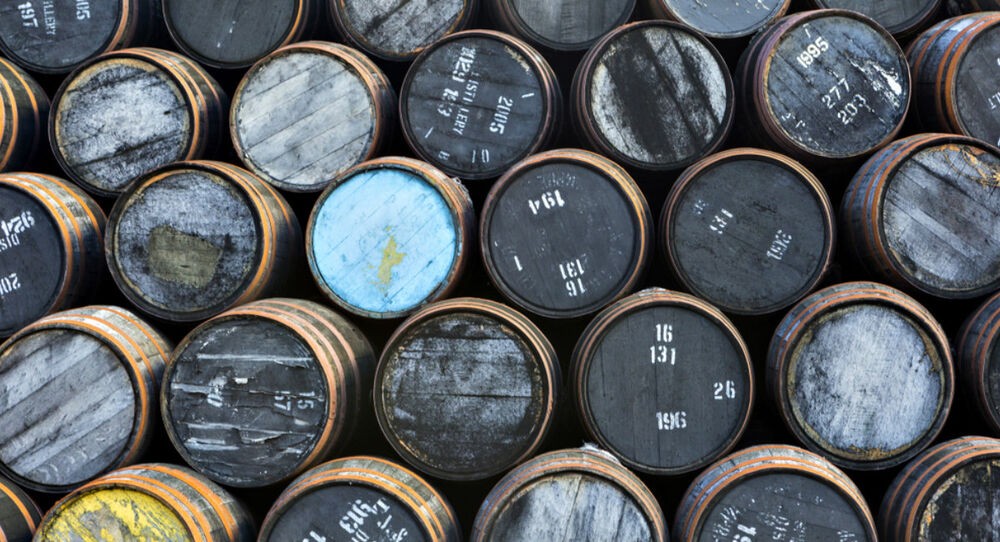With the growth of gin as a dominant spirit in the UK market and the introduction of almost a thousand new brands to the on-trade in the last three years, it’s safe to say that spirits are booming. The whisky market, a complex category where every consumer has a product or style with which they feel a deep connection than most, is also changing. Information gathered by CGA in March 2018 showed that while the overall market volume declined by 3.3% with almost half a million fewer bottles being sold, whisky value grew 1% to £1.1bn.
The CGA claim that much of the blame for the volume dip lay in the performance of standard blends, which fell 3.3%. This was somewhat buoyed by the current premiumisation trend in the whole spirit market and malts, imports and premium blends increased their sales by 3.1%. Whilst not such great news for distillers of standard brands, this is surely the opposite for premium labels and a sign that the market is following the trends set by other drinks categories - switching to less volume but better quality. [1]
Growth in the premium whisky market has been driven by consumers showing more desire to maximise their interest in products, their heritage and production methods. Long gone are the days when a pub stocked one optic of Bells and the dusty old bottle of expensive single malt on the back bar was the sole preserve of the older gent by the fire in the snug bar. Like with the other spirit categories, pubs and bars are responding to this trend by featuring more brands which is helping make whisky more accessible.
Understanding how customers choose whisky when out and about, can help venue operators boost sales. Whisky drinkers tend to prefer a premium serve than drinkers from other spirits categories where type, flavour and versatility are prime drivers for their choice. By making the flavour profiles as clear as possible on drinks menus and other point of sale displays venues can promote sales by showcasing the versatility of their bar stock. Categorising whiskies as sweet, fruity, spicy and smoky can encourage customers to deep-dive at the bar and also pair drinks for post meal occasions. [2]
American whiskies such as Old Forester from Kentucky, can act as a gateway to removing the "stuffy" image of the “single malt drunk neat”. These sweeter drinks lend themselves more to being used with mixers or as the constituent spirit for one of the vast numbers of whisky based cocktails like the Manhattan, Old Fashioned and Whisky Sour which are resurfacing.
Venues could also try encouraging drinkers to travel the whisky world and feature a "malt of the month" or "guest bourbon" from one of the many international whiskies from as far as France, Japan, Taiwan and New Zealand. Maybe a “passport” loyalty card could be put in place to encourage drinkers to sample amber nectars from across the globe.
Whether it is offering a premium serve, pairing with food or having a plethora of varieties on the back bar, operators need to tap into one of these key trends in order to get rid of the ‘neat’ whisky image. Just stocking hundreds of brands won't necessarily help, but as the back bar is a pub or bar’s shop window, a well-thought-out display can really add to the impact. Selection, location and presentation, play an important role in selling those carefully chosen whiskies. As a rule of thumb bar managers could position best sellers at the bottom of the display, premium drinks at eye level and super-premium or on-trend brands at the top.
While a growing number of clients are seeking premium brands with heritage, there is also a large number who will have no idea of what they are going to order. These are the customers who are influenced by effective point of sale displays, chalkboards and ingenious serving methods. Displaying branded glassware on the back bar can also help boost sales of a particular product and if cocktails or specialist drinks are on the menu then the visual clues offered by chopping boards and cocktail shakers on display may influence customers further. [3].
Whatever approach is taken, bar managers can be certain that the drinking public wants choice, quality, product information and the perfect serve.
[1] https://www.morningadvertiser.co.uk/Article/2018/07/04/How-are-whisky-sales-performing-in-the-UK
[2] https://www.morningadvertiser.co.uk/Article/2018/03/01/Whisky-is-no-longer-on-the-rocks
[3] https://www.morningadvertiser.co.uk/Article/2018/11/16/What-should-the-back-bar-look-like


